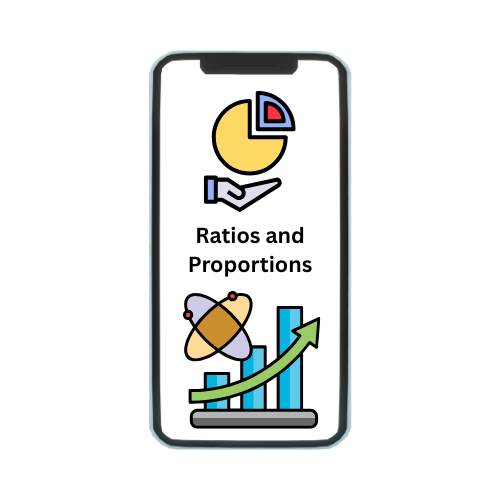Matrix trading is a sophisticated trading strategy used in financial markets, particularly in options trading. It involves creating a matrix of various potential trades and scenarios to evaluate the best possible trading outcomes based on different market conditions. This method typically includes analyzing multiple options strategies, such as spreads, straddles, and strangles, to assess their potential risks and rewards. By systematically evaluating these scenarios within a matrix format, traders can make more informed decisions and optimize their portfolios for varying market conditions. The goal of matrix trading is to enhance decision-making efficiency and risk management by providing a comprehensive view of potential trade outcomes and their associated impacts on the portfolio.
Definition of Matrix Trading
Matrix trading refers to a strategic approach in financial markets where traders use a matrix framework to systematically evaluate and manage multiple trading strategies and their potential outcomes. This technique involves creating a grid or matrix that maps out various scenarios, including different combinations of asset prices, market conditions, and trading strategies such as options spreads, straddles, and strangles. By analyzing these scenarios in a structured manner, traders can better understand the risk-reward profile of each potential trade and make more informed decisions. Matrix trading helps in optimizing portfolios, improving risk management, and enhancing overall trading efficiency by providing a clear, comprehensive view of possible market scenarios and their impacts on trading strategies.
Importance in Financial Markets
Matrix trading holds significant importance in financial markets due to its ability to enhance decision-making and risk management. By providing a structured framework to evaluate various trading scenarios and strategies, it enables traders to analyze multiple potential outcomes and their impacts on their portfolios. This method allows for a detailed assessment of risk and reward across different market conditions, which is crucial for optimizing trading strategies and making informed decisions. The use of matrix trading helps in identifying the most favorable trades, managing complex portfolios, and mitigating potential risks by offering a comprehensive view of how different scenarios might affect trade performance. Consequently, matrix trading is a valuable tool for improving trading efficiency, maximizing returns, and maintaining robust risk management practices in dynamic and often unpredictable financial markets.
How Matrix Trading Works
- Scenario Mapping: Matrix trading involves creating a grid or matrix that outlines various trading scenarios, including different asset prices, market conditions, and potential strategies.
- Strategy Analysis: Traders input different trading strategies, such as options spreads, straddles, and strangles, into the matrix to assess their performance under various scenarios.
- Risk-Reward Assessment: Each scenario in the matrix is evaluated for its risk and reward profile, allowing traders to understand how different strategies might perform given specific market conditions.
- Outcome Evaluation: The matrix provides a clear view of potential outcomes for each strategy, helping traders to identify which trades offer the best balance of risk and return.
- Informed Decision-Making: By analyzing these structured scenarios, traders can make more informed decisions, optimize their trading strategies, and manage their portfolios more effectively.
- Risk Management: Matrix trading aids in managing risk by offering a comprehensive understanding of how different scenarios impact potential trade outcomes, thus enabling better risk mitigation strategies.
Key Components
- Matrix Grid: The foundational element of matrix trading is the matrix grid, which organizes various trading scenarios and strategies in a structured format. This grid helps visualize the potential outcomes and relationships between different market conditions and strategies.
- Trading Strategies: The matrix includes various trading strategies such as options spreads, straddles, and strangles. These strategies are analyzed within the matrix to determine their effectiveness under different scenarios.
- Market Conditions: The matrix accounts for various market conditions, including different asset prices, volatility levels, and economic factors. This helps in understanding how these conditions affect the performance of each trading strategy.
- Risk-Reward Profiles: Each scenario in the matrix is assessed for its risk and reward profile, providing insights into the potential gains and losses associated with different strategies.
- Outcome Scenarios: The matrix evaluates different potential outcomes for each strategy, offering a comprehensive view of how strategies might perform under varying market conditions.
- Decision-Making Tools: The structured format of the matrix assists traders in making informed decisions by highlighting the most favorable strategies and scenarios based on risk and return assessments.
Matrix Trading Models
- Single-Strategy Models: These models focus on evaluating the performance of a single trading strategy across different market scenarios. They help in understanding how one specific strategy, such as a call or put spread, behaves under various conditions.
- Multi-Strategy Models: Multi-strategy models incorporate multiple trading strategies within the matrix, allowing traders to compare and contrast the performance of different strategies simultaneously. This helps in identifying the optimal combination of strategies for a given market condition.
- Dynamic Models: Dynamic matrix trading models adapt to changing market conditions in real-time. They continuously update the matrix with new market data, enabling traders to make decisions based on the most current information and adjust strategies as needed.
- Scenario-Based Models: These models use predefined market scenarios, such as bullish, bearish, or neutral conditions, to assess how different trading strategies perform under each scenario. This helps in planning for various market environments.
- Risk-Adjusted Models: Risk-adjusted models focus on evaluating trading strategies based on their risk-adjusted returns. They incorporate metrics such as the Sharpe ratio or Value at Risk (VaR) to assess how strategies perform relative to their risk levels.
Types of Matrix Trading Strategies
- Options Spreads: Options spreads involve combining multiple options contracts to create a position with a specific risk-reward profile. Strategies like bull spreads, bear spreads, and butterfly spreads are evaluated within the matrix to determine their performance under various market conditions.
- Straddles and Strangles: These strategies involve buying both call and put options to profit from significant price movements, regardless of direction. The matrix helps assess how straddles and strangles perform in different market scenarios and volatility levels.
- Iron Condors: An iron condor strategy combines a bear call spread and a bull put spread to create a range-bound trading strategy. The matrix is used to evaluate its effectiveness and risk profile across different market conditions.
- Calendar Spreads: Calendar spreads involve buying and selling options with the same strike price but different expiration dates. The matrix helps analyze how these spreads perform over time and under varying market conditions.
- Ratio Spreads: Ratio spreads involve buying and selling different quantities of options to create a net position with a specific risk-reward profile. The matrix evaluates how these strategies perform under different scenarios and market conditions.
- Diagonal Spreads: Diagonal spreads involve options with different strike prices and expiration dates. The matrix helps in analyzing how these spreads perform in varying market conditions and with changes in volatility.
Advantages of Matrix Trading
- Comprehensive Analysis: Matrix trading provides a structured framework for analyzing multiple trading strategies and scenarios simultaneously, offering a comprehensive view of potential outcomes and their impacts.
- Enhanced Decision-Making: By evaluating various scenarios and strategies within a matrix, traders can make more informed decisions, selecting the most optimal strategies based on their risk and reward profiles.
- Improved Risk Management: Matrix trading helps in identifying and managing risks more effectively by visualizing how different strategies perform under varying market conditions, enabling better risk mitigation.
- Optimized Portfolio Management: The matrix approach allows traders to assess how different strategies affect the overall portfolio, facilitating the optimization of portfolio performance and diversification.
- Scenario Planning: Traders can use matrix trading to prepare for multiple market scenarios, such as bullish, bearish, or volatile conditions, allowing for proactive adjustments to trading strategies.
Limitations of Matrix Trading
- Complexity: Matrix trading can be complex and require a deep understanding of various trading strategies and scenarios. The intricate nature of analyzing multiple strategies simultaneously can be overwhelming for less experienced traders.
- Data Overload: The matrix approach involves evaluating numerous scenarios and strategies, which can lead to data overload. This might complicate decision-making and result in potential analysis paralysis if not managed effectively.
- Assumptions and Predictions: The accuracy of matrix trading depends on the assumptions and predictions about future market conditions. If these assumptions are incorrect, the matrix may provide misleading or suboptimal recommendations.
- Real-Time Adjustments: While matrix trading can provide a structured view of potential outcomes, it may not always account for real-time market changes or sudden events, potentially affecting the effectiveness of the strategies.
- Resource Intensive: Developing and maintaining matrix trading models can be resource-intensive, requiring significant time and effort to input and update data, and to analyze various scenarios.
Risk Management in Matrix Trading
- Scenario Analysis: Matrix trading incorporates detailed scenario analysis, allowing traders to evaluate how different trading strategies perform under various market conditions. This helps in understanding potential risks and rewards associated with each scenario.
- Diversification: By assessing multiple strategies within the matrix, traders can diversify their positions and reduce exposure to any single market condition. This diversification helps in managing overall portfolio risk more effectively.
- Risk-Reward Evaluation: The matrix framework enables traders to evaluate the risk-reward profile of different strategies, aiding in the selection of strategies that align with their risk tolerance and investment goals.
- Stress Testing: Matrix trading models can include stress testing to assess how strategies perform under extreme or adverse market conditions, providing insights into potential vulnerabilities and helping to prepare for unexpected market movements.
- Dynamic Adjustments: The matrix approach allows for dynamic adjustments to strategies based on real-time market data and changing conditions, enabling traders to manage risks proactively and adapt to new information.
Real-World Applications
Matrix trading is widely used in real-world financial markets to enhance trading strategies and optimize portfolio management. In options trading, for instance, traders employ matrix trading to evaluate various options strategies, such as spreads, straddles, and strangles, under different market scenarios. This helps in identifying the most effective strategies based on current and projected market conditions. Portfolio managers use matrix trading to assess how different strategies impact the overall portfolio, enabling better diversification and risk management. Additionally, matrix trading is applied in stress testing and scenario analysis to prepare for potential market shocks or extreme conditions. By providing a structured approach to analyzing multiple trading scenarios, matrix trading aids in making informed decisions, managing risks, and maximizing returns in dynamic financial environments.
Conclusion
Matrix trading represents a sophisticated approach to evaluating and managing trading strategies by offering a structured framework for analyzing various market scenarios. Its ability to provide a comprehensive view of potential outcomes, coupled with its focus on risk-reward assessment, makes it a valuable tool for traders and portfolio managers seeking to optimize their strategies and mitigate risks. Despite its complexity and potential for data overload, the benefits of matrix trading—such as enhanced decision-making, improved risk management, and effective scenario planning—outweigh its limitations. By enabling traders to systematically explore multiple strategies and market conditions, matrix trading supports more informed and strategic decision-making, ultimately contributing to more robust and resilient trading and investment practices. As financial markets continue to evolve, the use of matrix trading will remain a critical component in navigating market complexities and achieving successful trading outcomes.







